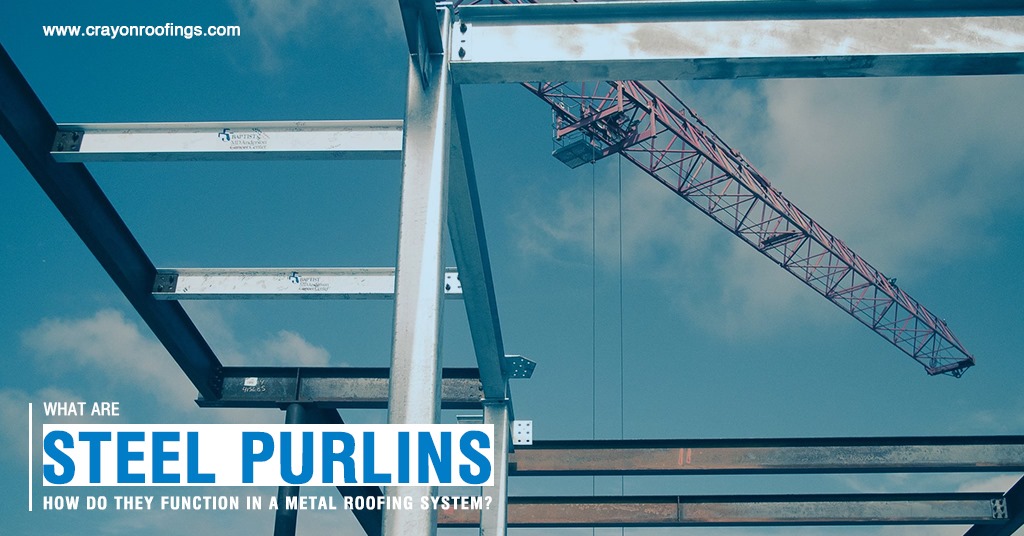When you start planning a metal building, you quickly run into technical terms that might be new to you, and steel purlins are one that often stands out. Far from being just another part of the structure, these slim yet strong members play a crucial role in keeping a roof stable, secure, and built to last.
In this blog, we will provide you with everything you need to know about purlins, how they work, what types of purlins are out there, and what you should look for when deciding on purlins from good purlin manufacturers. Regardless of whether you are a builder, contractor, or homeowner, having an understanding of steel purlins will enable you to make better-informed decisions, yielding more robust and durable structures.
What Are Steel Purlins?
Steel purlins are horizontal structural elements that are installed along the length of a roof or wall to provide support to the panels or sheets. In simple terms, they are the structural component that fixes your roofing or cladding down.
Steel purlins are commonly found in metal roofing systems, including pre-engineered buildings (PEBs), warehouses, factories, and many industrial buildings. The steel purlin’s main function is to transfer the roof loads to the main structural frame, i.e., rafters or steel beams.
Why Are Purlins Important in a Roofing System?
1. Load Distribution
Steel purlins will distribute loads on the roof (such as wind, snow, or the weight of the roofing sheets) evenly across the frame of the building. If purlins were not used, there would be weak points where the roof would fail.
2. Structural Integrity
Adding purlins to the framework adds rigidity to the entire roofing system and stability so that the roof will not sag or collapse under loads.
3. Material Efficiency
Purlins utilize a longer span for your columns or rafters, resulting in less steel ultimately required within the main frame and cost-effective design without compromising on the required strength.
Types of Steel Purlins Commonly Used
Most purlin manufacturers offer two main types of purlins:
C-Purlins
- C-shaped
- Good for supporting roof loads
- Typically used as wall purlins and side rails
Z-Purlins
- Z-shaped
- Can provide more versatility in overlapping (or lapping)
- Better than C-purlins when used in long-span roofing systems
Each provides unique benefits depending on the design of the building and the requirements of the structure.
How Steel Purlins Are Installed in a Metal Roof System
The installation process of purlins is important. Purlins are normally attached to enclose the rafters with bolted, clamped, or welded connections. Once the purlins are installed then the metal roofing sheets can be installed over the purlins and secured.
Factors That Affect Purlin Installation
- Roof slope: A steeper roof slope may require purlin spaces closer together
- Span length: wider spans usually mean thicker purlins
- Wind load: requires stronger purlin connections if in a high-wind location
For safety and serviceability, always be sure to follow the applicable building codes and look at certified manufacturers’ recommendations, or consult with certified purlin manufacturers or licensed structural engineers during installation
Where Are Steel Purlins Used?
While primarily known for their role in roofing, steel purlins are also used in:
- Industrial and warehouse buildings
- Aviation hangars
- Metal roofs for residential use
- Commercial canopy solutions
- Cold storage facilities
Basically, anywhere a responsible person constructing a light-frame structure needs to support roofing or wall cladding attachment, purlins will be needed.
What to Look for in a Reliable Purlin Manufacturer
Making the correct decision when selecting a purlin manufacturer can make all the difference to your building’s safety and durability. Below are the aspects to examine:
Quality of Steel
Be on the lookout for ISI or ISO certification, grade of material, and anti-corrosive treatment.
Customization Options
A good purlin manufacturer will provide customers with custom lengths, thicknesses, and either Cee or Zee shapes to fit their building.
Delivery Timelines
Fast, prompt delivery is essential at the early stage of any building project in construction to make sure it is ongoing without delay.
Support and Service
Look for manufacturers of purlins that provide installation guides, technical drawings, and project lifecycle support.
Trusted Supplier: Crayon Roofings and Structures
When sourcing quality roofing components, Crayon roofings is among those trusted names. Well known for their high-grade steel purlins, timely delivery, and no-charge consultation, even their product range is more than backed by engineering accuracy and long-lasting durability. They allow contractors throughout South India to confidently pursue each project.
Steel purlins are much more than secondary components of a roof; they are critical to the strength, performance, and functional lifespan of your entire metal building. By realizing their importance, selecting the correct type and appropriate option for your project, and working with knowledgeable purlin suppliers like Crayon Roofings, you can make a meaningful impact. Get in touch today for a quote and make sure you have the right solution for your needs.
Whether you are building a new structure or replacing an older one, don’t risk using poor-quality Purlins. After walls and roofs, they are the hidden gems of your building!
Frequently Asked Questions FAQs
Q.What is the function of purlin steel in construction?
A.They act as a support for the roof or wall sheets and transmit loads to the building frame.
Q. Which is better, C-Purlin or Z-Purlin?
A. Z-Purlins can perform at longer spans than over web height because they overlap.
Q.Where do I find reputable purlin suppliers near me?
A. Look for local suppliers with a solid reputation and good reviews. For example, Crayon Roofing is a good choice if you’re based in South India.

